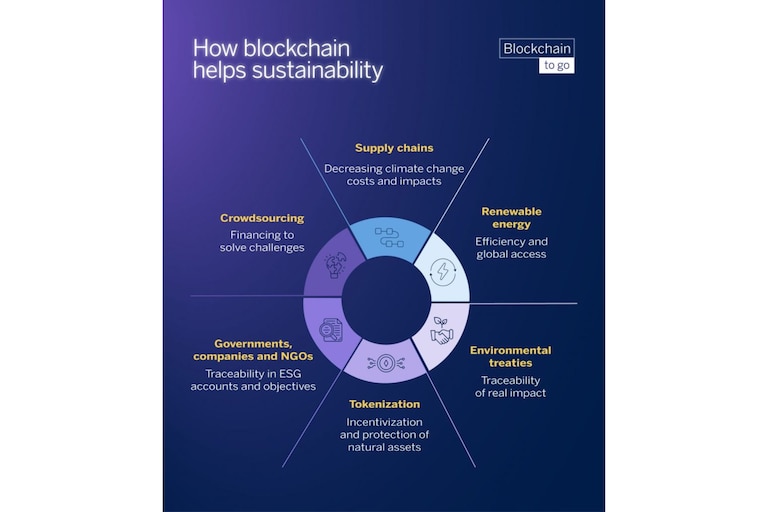The energy needed to feed blockchain technology and its cryptocurrencies, such as that based on the work test (Pow), is enormous; but the evolution of mining protocols to proof of stake (PoS) or the transition to renewable energies enables more sustainable networks.
As the contributions of blockchain technology to the sustainable advancement of businesses—by increasing transparency and reducing costs—become clearer, the current debate centers on how to render the technology itself more sustainable. Historically, one of the foremost criticisms leveled against Bitcoin is its huge energy use when employing the proof-of-work (PoW) protocol, which is a mechanism to securely verify and add transactions to the blockchain. This mining protocol requires high energy consumption and computer resources.
Bitcoin consumption is often compared to that of entire countries. In July 2023, the bitcoin network consumed about 149 TWh, surpassing the consumption of Ukraine (134.5 TWh/year) and nearly matching that of Malaysia (150.8 Twh). When compared to industrial sectors, Bitcoin's uses 20 TWh more than gold mining. In fact, in October 2022, the European Commission, which is preparing a report on the environmental impact of the crypto universe to be completed before 2025, called on all Member States to develop measures to reduce the energy used in cryptocurrency mining. But is it possible to change the system to make it more sustainable?
The proof of work (PoW) is one of the ways in which the blockchain can reach consensus and store reliable information. In this process, cryptocurrency miners carry out energy-intensive complex calculations to authenticate blocks in the chain.
The problem? The energy used in these verification systems is wasted, because the calculation itself does not add value of trust to the system compared to alternative systems not based on PoW. PoW requires resources such as hardware and electricity, and others do not.

Not all cryptocurrencies are the same
Because Bitcoin, launched in 2009 by Satoshi Nakamoto, was the inaugural cryptocurrency and initiated with the proof-of-work model, its energy consumption is often mistaken for the aggregate of all cryptocurrencies. However, each currency has its unique impact and operational methodology.
The energy consumed by a cryptocurrency depends on what cryptocurrency it is, because not all consume the same amount of energy or use the same resources. Bitcoin, due to its PoW protocol and mining process, is increasingly using more resources and emitting greater volumes of greenhouse gases annually. But it doesn’t have to be like this: the truth is that Bitcoin can change just as Ethereum or other cryptocurrencies designed from a more sustainable perspective have already changed.
Ethereum has become a green and sustainable network since completing its transition from proof-of-work to proof-of-stake (PoS), an alternative method for information verification and consensus building. The following chart from Ethereum.org is striking, revealing data comparing the PoW of BTC and ETH to the PoS of ETH.
50 years growing at your side
Our team of high-net-worth experts offers its extensive experience in advising and designing sophisticated strategies tailored to your needs and values.

